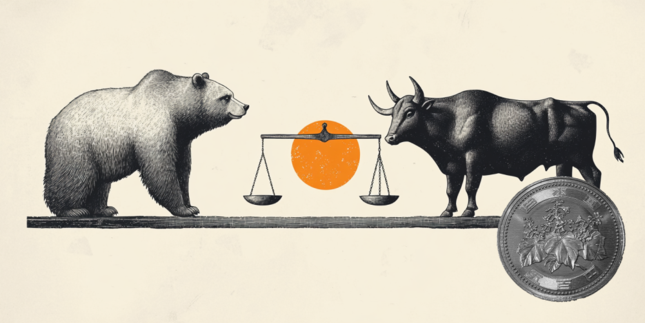USD/JPY Forecast and News
USD/JPY holds recovery near 146.00; upside seems limited ahead of US NFP
USD/JPY trades close to 146.00, holding its recovery in the Asian session on Friday. Investors dial down bets of aggressive BoJ rate hikes, amid worries that Trump's new tariffs could negatively impact Japan's economy, helps the pair sustain its latest upswing. But buyers remain wary ahead of US NFP and Powell.
Latest Japanese Yen News
USD/JPY Technical Overview
From a technical perspective, the intraday slump below the 100-period Simple Moving Average (SMA) on the 4-hour chart comes on top of the recent breakdown through a multi-week-old ascending channel. This, along with bearish oscillators on the daily chart, supports prospects for a further near-term depreciation for the USD/JPY pair. Hence, a subsequent fall towards the 147.00 mark, en route to the 146.55-146.50 region or a multi-month low touched in March, looks like a distinct possibility.
On the flip side, any attempted recovery might now confront hurdle near the 148.00 mark. A sustained move, however, could trigger a short-covering rally towards the 148.65-148.70 region. That said, a further move up, is likely to attract fresh sellers near the 149.00 mark and cap the USD/JPY pair near the 149.35-149.40 region, or the 100-period SMA on the 4-hour chart. The latter should act as a key pivotal point, which if cleared might negate the negative outlook and pave the way for further gains.
Fundamental Overview
The Japanese Yen (JPY) caught aggressive bids during the Asian session on Thursday amid the global flight to safety, triggered by US President Donald Trump's sweeping reciprocal tariffs. Investors grew increasingly concerned that the move could reshape the global trading system and impact negatively on the world economy, sending shockwaves through global financial markets. This, along with a broadly weaker US Dollar (USD), drags the USD/JPY pair to over a three-week low.
Meanwhile, investors now seem convinced that the Bank of Japan (BoJ) will raise rates further amid a broadening inflation in Japan. This marks a big divergence in comparison to expectations that the Federal Reserve (Fed) will resume its rate-cutting cycle soon amid a tariff-driven US economic slowdown. This would result in a further narrowing of the rate differential between Japan and the US, which supports prospects for a further appreciating move for the lower-yielding JPY.
Japanese Yen sticks to strong intraday gains amid a rush to safe-haven assets after Trump's tariffs
The global risk sentiment took a turn for the worst after US President Donald Trump unveiled reciprocal tariffs of at least 10% on all imported goods, sparking concerns over slowing global economic growth.
Stock markets around the world plunged in reaction to the US tariffs announcement, lifting the safe-haven Japanese Yen to a three-week high against the US Dollar during the Asian session on Thursday.
Japan's Prime Minister Shigeru Ishiba said that he will not hesitate to directly approach US president Trump if appropriate and will continue to demand US to reconsider tariff measures.
The anti-risk flow saw most global government bond yields fall, with the yield on the benchmark 10-year US government bond tumbling to the 4.0% neighborhood and hitting a fresh year-to-date low.
Traders lifted bets that the Federal Reserve will start lowering borrowing costs at the June policy meeting and deliver a total of three 25-basis-point reductions to the policy rate by the end of this year.
This, to a larger extent, overshadows Wednesday's upbeat US ADP report, which showed that private-sector employers added 155K jobs in March, far more than the 105K expected and 84K previous.
Meanwhile, worries about the impact of harsher-than-expected US tariffs on Japan's economy forced investors to scale back their bets that the Bank of Japan would raise policy rate at a faster pace.
However, the incoming macro data, including strong consumer inflation figures from Tokyo released last Friday, keeps the door open for further BoJ rate hikes, which, in turn, underpins the JPY.
Traders now look forward to Thursday's US economic docket – featuring Weekly Initial Jobless Claims and the ISM Services PMI. The focus, however, will remain on trade-related developments.
USD/JPY Big Picture
USD/JPY Bullish Themes
USD/JPY Bearish Themes
Latest JPY Analysis
Editors' picks

EUR/USD: Powell and the NFP will put the rally to the test
EUR/USD gathered extra steam and advanced to multi-month peaks near 1.1150, although the move fizzled out somewhat as the NA session drew to a close on Thursday.

GBP/USD takes a hard rejection from fresh highs, but holds on the bullish side
GBP/USD briefly clipped the 1.3200 handle for the first time in six months on Thursday, climbing into fresh highs as the Greenback turns sour across the board. The Trump administration’s “reciprocal” tariffs and a flat tariff have kicked the legs out from beneath market sentiment, despite a delayed reaction to tariff announcements that came after US markets closed on Wednesday.

USD/JPY holds recovery near 146.00; upside seems limited ahead of US NFP
USD/JPY trades close to 146.00, holding its recovery in the Asian session on Friday. Investors dial down bets of aggressive BoJ rate hikes, amid worries that Trump's new tariffs could negatively impact Japan's economy, helps the pair sustain its latest upswing. But buyers remain wary ahead of US NFP and Powell.

Gold turns south toward $3,100, all eyes on US NFP and Powell
Gold price returns to the red, eyeing $3,100 again in the Asian session on Friday after facing some profit-taking in the previous session. Escalating concerns over a global trade war and a US recession boost the Gold price, a traditional safe-haven asset. The focus now stays on the US NFP data and Powell's speech.

WTI drops below $67 on demand concerns, OPEC+ output hike
Crude oil prices decline sharply on Thursday, pressured by growing concerns over the demand outlook following US President Donald Trump's tariff announcements and OPEC+ decision to increase oil output.
Majors
Cryptocurrencies
Signatures
USD/JPY YEARLY FORECAST
How could USD/JPY move this year? Our experts make a USD/JPY update forecasting the possible moves of the yen-dollar pair during the whole year.
USD/JPY FORECAST 2025
The US Dollar could decline against some currencies but not against the Yen. Why? Because the Japanese currency is a safe-haven asset sensitive to tensions in Asia. If Sino-American tensions ease, it would likely fall. Central banks are slow movers, and the Bank of Japan – especially under Governor Kazuo Ueda – is even slower. Ueda and his colleagues are expected to drag their feet and only mention rate hikes as an effort to keep the Yen supported. Read more details about the forecast.
USD/JPY could trend up in the latter half of the year in response to more hawkish Fed policy and disillusionment with the BoJ's lack of rate hikes.
MOST INFLUENTIAL POLITICAL EVENTS IN 2025 FOR USD/JPY
Politics will likely be more dominant in 2025. The main reason is Trump’s new administration, but political instability in Japan will also play a role. In case Trump follows through with some of his threats, the Yen could benefit in two ways. First, when worries grow, it benefits, as mentioned earlier. Secondly, Japan could benefit from trade diverting away from China.
The Fed isn’t expected to raise rates in 2025, but refraining from bringing borrowing costs back to around 3% – nor intending to do so – would be enough to keep the US Dollar at an advantage over all currencies, including the safe-haven Yen. While inflation hit the shores of Japan, it is hard to see the BoJ further raising rates while the entire world is slashing them.
Influential Institutions & People for the USD/JPY
The US Dollar Japanese Yen can be seriously affected by news or the decisions taken by two main central banks:
The Federal Reserve Bank (Fed)
On the other
FED Official Website, on Twitter and Facebook
The Bank of Japan (BOJ)
The Bank of Japan is the central bank of Japan and it's a juridical person established based on the Bank of Japan Act, nor being a government agency either a private corporation. The most important missions of the BOJ are the following: to issue and manage banknotes, to implement monetary policy and to ensure stability of the financial system. Almost all of the decisions are taken by the Policy Board, formed by a bunch of members working to provide currency and monetary control and setting the next moves that the central bank will take.
BOJ Official Website and on Twitter
Jerome Powell
Jerome Powell took office as chairman of the Board of Governors of the Federal Reserve System in February 2018, for a four-year term ending in February 2022. His term as a member of the Board of Governors will expire January 31, 2028. Born in Washington D.C., he received a bachelor’s degree in politics from Princeton University in 1975 and earned a law degree from Georgetown University in 1979. Powell served as an assistant secretary and as undersecretary of the Treasury under President George H.W. Bush. He also worked as a lawyer and investment banker in New York City. From 1997 through 2005, Powell was a partner at The Carlyle Group.
Jerome Powell Fed's Profile and Wikipedia
Kazuo Ueda
Kazuo Ueda is the 32nd and current Governor of the Bank of Japan. He is a professor and the dean of the business department at Kyoritsu Women's University in Tokyo and the external director at JGC Holdings Corp, an engineering company and at the state-owned Development Bank of Japan. The 71-year-old is widely seen as an expert on monetary policy but is seen as a surprise appointment by analysts. He was not even considered a dark-horse candidate. Ueda wasn’t really on their radar because the BOJ governor job has traditionally been assumed by a long-serving Finance Ministry bureaucrat or central bank official.
Ueda on Wikipedia's Profile
BOJ NEWS & ANALYSIS
FED NEWS & ANALYSIS
About USD/JPY
The USD/JPY (or US Dollar Japanese Yen) currency pair belongs to the group of 'Majors', a way to mention the most important pairs in the world. This group also includes the following currency pairs: EUR/USD, GBP/USD, AUD/USD, USD/CHF, NZD/USD and USD/CAD. Japanese Yen has a low-interest rate and is normally used in carrying trades. This is the reason why is one of the most traded currencies worldwide. In this pair, the US Dollar is the base currency and the Japanese Yen is the counter currency. The pair represents American (from the United States of America) and Japanese economies.
Trading this currency pair is also known as trading the "ninja" or the "gopher", although this last name is more frequently used when referred to the GBP/JPY currency pair. The US Dollar Japanese Yen usually has a positive correlation with the following two pairs: USD/CHF and USD/CAD. The nature of this correlation is due to the fact that both currency pairs also use the US Dollar as the base currency. The value of the pair tends to be affected when the two main central banks of each country, the Bank of Japan (BoJ) and the Federal Reserve Bank (Fed), face serious interest rate differential.
Related pairs
GBP/USD
The GBP/USD (or Pound Dollar) currency pair belongs to the group of 'Majors', a way to mention the most important pairs worldwide. This group also includes the following currency pairs: EUR/USD, USD/JPY, AUD/USD, USD/CHF, NZD/USD and USD/CAD. The pair is also called 'The Cable', referring to the first Transatlantic cable that was crossing the Atlantic Ocean in order to connect Great Britain with the United States of America. This term was originated in the mid-19th century and it makes GBP/USD one of the oldest currency pairs in the world.
The popularity of the Pound Dollar is due to the fact that represents two strong economies: British and American (from the United States of America). The Cable is a closely watched and widely traded currency pair where the Pound is the base currency and the US Dollar is the counter currency. For that reason, all the macroeconomic data related to the United States and the United Kingdom affects the price of this pair. One of the events which affected most the volatility of the pound vs. dollar was Brexit.
EUR/USD
The EUR/USD (or Euro Dollar) currency pair belongs to the group of 'Majors', a way to mention the most important pairs in the world. This group also includes the following currency pairs: GBP/USD, USD/JPY, AUD/USD, USD/CHF, NZD/USD and USD/CAD. The popularity of Euro Dollar is due to the fact that it gathers two main economies: the European and American (from United States of America) ones. This is a widely traded currency pair where the Euro is the base currency and the US Dollar is the counter currency. Since the EUR/USD pair consists of more than half of all the trading volume worldwide in the Forex Market, it is almost impossible for a gap to appear, let alone a consequent breakaway gap in the opposite direction.
Normally, the EUR/USD is very quiet during the Asian session because economic data that affects the fundamentals of those currencies is released in either the European or U.S. session. Once traders in Europe get to their desks a flurry of activity hits the tape as they start filling customer orders and jockey for positions. At noon activity slows down as traders step out for lunch and then picks back up again as the U.S. comes online.